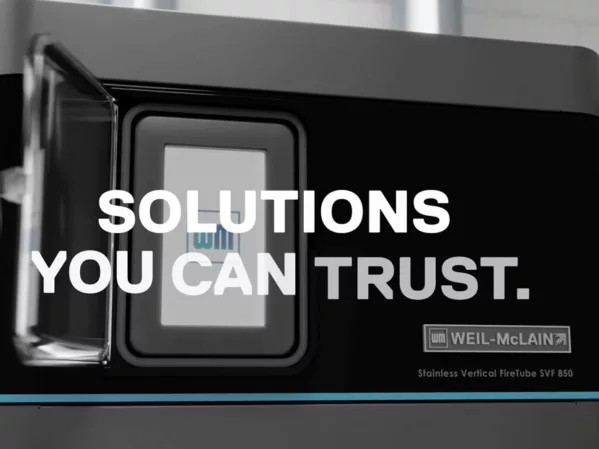Hiring and retaining star techs are two different issues that must be approached from different perspectives. The first thing to know is the definition of a star tech. A star tech is a technician who has integrity, loyalty, aptitude for the position, great mental attitude, self-motivation, and the intent to deliver excellence, and follows orders.
Those seven traits are the foundation of any good employee. Without any one of those assets, star tech status cannot be attained. Therefore, it is imperative for contractors to know how to ascertain whether a candidate for employment as a technician has all the qualities of a star tech.
Those engrained qualities aren’t the only ones needed. There are other assets needed that may not be inbred, but can be taught, such as: accountability, dependability, good housekeeping, organization, thoroughness, proper paper work handling, coherent writing ability, spelling, penmanship, salesmanship, neat and clean appearance, pleasant and courteous demeanor, professionalism, neat and clean workstyle, and low callback status.
Once you are certain a tech candidate has the first seven qualities, you can take a chance on hiring that tech in a probationary manner. Then you can show the tech how to attain the other traits. The combination of the seven must have assets, and successful graduation to the other aforementioned qualities will lead to the birth of a star tech. It is the PHC service business owner’s responsibility to determine whether a tech has the must-have qualities and training of other aforementioned qualities.
Retaining is another issue. Star techs are the elite of the technician pool. If you don’t compensate them in a manner that is commensurate with their value to your business, you could very well lose them to a competitor who is willing to reward them in a way that will make them feel appreciated and content. Others may decide to open their own business and compete with you for your existing and potential clientele. Either situation is detrimental to your business.
The tendency to keep your prices low doesn’t give you the financial resources necessary to properly compensate star techs. Low prices often turn into below true cost (to you) prices because low prices do not afford you the ability to properly address Murphy’s Law (whatever can happen will happen). Murphy’s Law number one for contractors is that no PHC service contractor sells all their hours all the time. Therefore, your hourly operational labor/overhead cost per tech fluctuates constantly.
In an attempt to sell more hours, fear of losing work blinds contractors to the fact that losing money and/or star techs is more devastating to a PHC service contracting business than losing a job that costs you more to perform than the revenue you bring in to your business for the job.
In the PHC service industry, star techs are your product. They deliver excellence to consumers while low-ball priced contractors who don’t care produce mediocrity. Excellence costs more to produce than mediocrity. Therefore, you must charge more than those low-ball priced contractors and their pickup truck Charlie associates.
Adding to this pricing dilemma is the fear-induced thought that the cost of your service has to compete with those other guys. You must remember excellence is a higher caliber of service than mediocrity, and consumers want (and deserve) excellence. As a consumer, don’t you? To attain an excellent service standard, you need star techs.
If you are a purveyor of mediocrity who wants to continue delivering schlock service, you can stop reading. If you are, or want to become, a star tech company with star tech service, you must retain your star techs through performance evaluation and proper compensation.
First and foremost, forget about time and material pricing. As a consumer, I’m sure you would rather know the price of any product or service before purchasing. That’s smart and helps avoid arguments associated with the shock of a bill calculated after the job is done. And, it helps you upsell and increase sales. That’s one of the keys to properly and profitably expanding your business.
As a young contractor entering the business arena, I used the flawed concept of time and material pricing. In my first month in business, I went to a consumer who had a faucet drip. With no thought to the possibility of offering the client options and upfront prices, I replaced the internal parts of the faucet and proudly handed her my T & M bill after the job was done. She looked at the bill and immediately asked how much a new faucet would have cost. I had not given her the opportunity to decide how she wanted to spend her money. That was foolish on my part.
To answer her question, I would have to give her an upfront contract price for a faucet installed. But, to fix her faucet, I based the price on time and material. Using two different pricing systems is confusing to consumers. Why would a contractor give a set price for one service, but not for all services? If you confuse consumers, it is difficult to win their trust. In turn, your chances of selling a service are lessened.
From that incident, I learned to give consumers options and the prices for each option before performing any task. This is accomplished by properly identifying and calculating your true average cost for any task. Then, blending that cost with a profit margin that can get you where you want to go. By selling your services on a contract-pricing basis, you have a solid method to help reward techs financially while improving your business results.
With time and material pricing, you charge by the hour sold. Once an hour passes that is unsold, it is gone forever, and you still had to pay for it. With contract pricing, all jobs are based on the average tech. A star tech might perform the task faster than an average tech. That means you have the opportunity to pick up the cost of hours not sold. That benefit of contract pricing and star tech employment alone should make you contemplate the use of contract pricing over T & M pricing.
Star techs are as human as you are. They, like you, want to get ahead. If you want to keep them in your employ, you must help them get ahead.
Obviously, the first way you help them in this endeavor is by paying them a salary commensurate with their ability. But, to sweeten the pot, in addition to a base salary, you could offer bonus incentives based on a percentage of the revenue they bring in to your business and the callbacks they have regarding the work they have performed.
A low trial bonus incentive percentage that starts slow and easy with hopes of a higher percentages if the trial proves positive is wise. The reason for the low percentage is that once you give an employee a benefit it is difficult to take it away without affecting morale.
By keeping the initial trial percentage low, if the trial period proves to not produce positive results, you could still afford to give them the benefit with low impact on your operational costs as long as you include this expense with your budgeted technician compensation line item, as you should with all legitimate operational expenses.
Offering a low one percent bonus incentive broken down in two parts — a half percent for selling the job and a half percent for doing the job — allows you to take into consideration the fact that the selling tech and the task performing tech may be two different techs.
Due to the fact that all techs have callbacks, bonus incentives for any task resulting in callbacks could be negated. This allows you to reward techs based on their sales and task performance while giving them a reason to control their callbacks.
If the trial proves positive, you should consider a higher bonus percentage.
After your trial period, you could advance to a more complex incentive system that is based on their individual performance rating rather than a common percentage for all techs. This method also serves to eliminate uncomfortable feelings that arise when techs ask for a raise. As you raise your prices based on all other operational expenses, their compensation, dependent on their performance rating, can also rise.
Techs with higher performance ratings will earn more than those who have lower ratings. The techs with higher performance ratings would also serve to be good examples of how other techs in your employ can lift themselves up by their own bootstraps.
For assistance in hiring and retaining star techs, creating incentive programs, or, any contracting business issue, you can call me for information, coaching and/or my books “Solutions Management Theories and Methods for the Contracting Business” or “Striving for Star Techs” that cover this issue.
Remember: excellence can only be consistently delivered by star techs.






